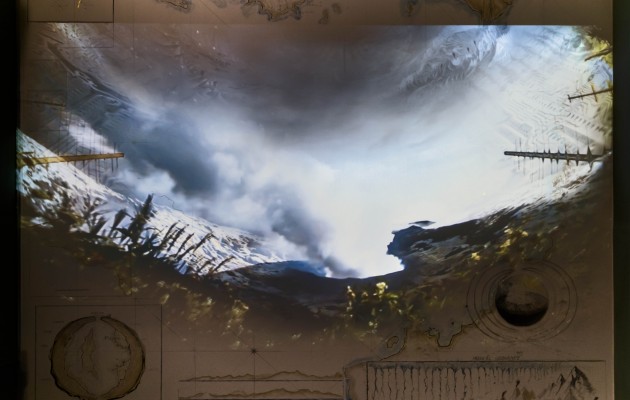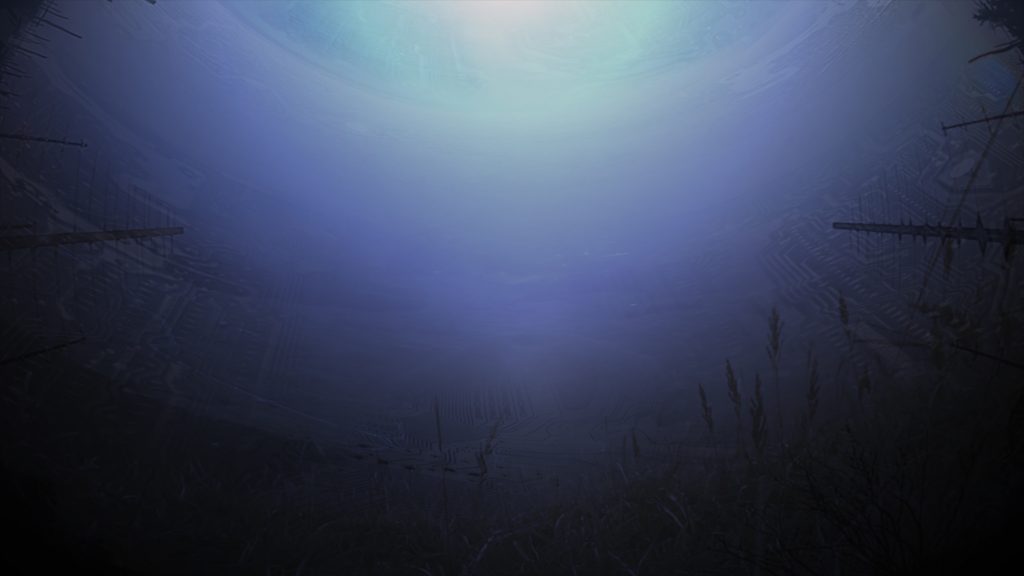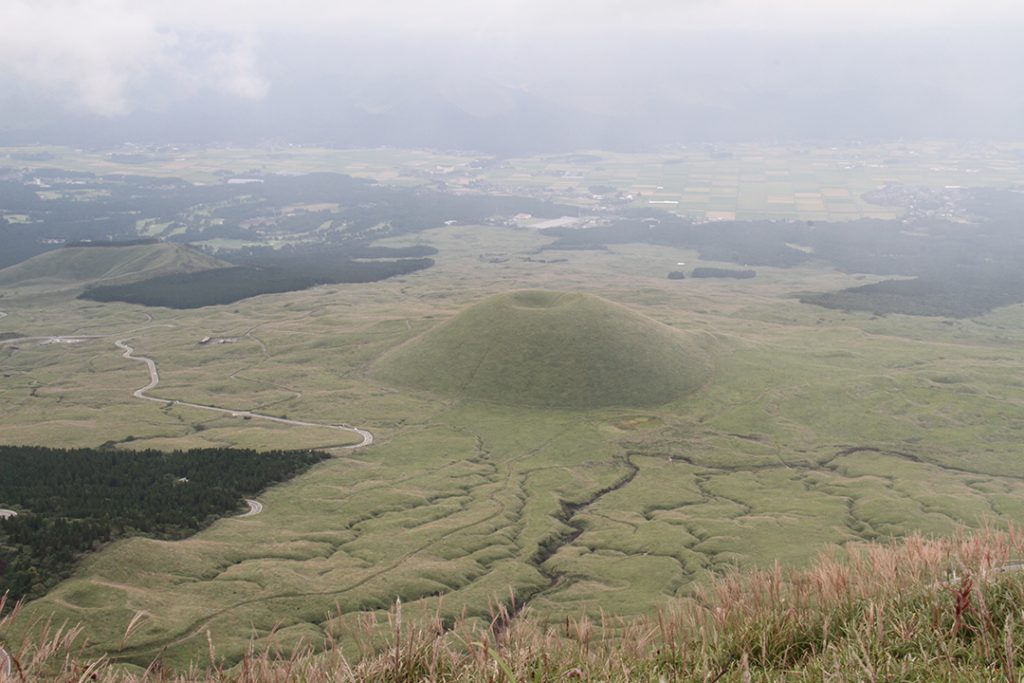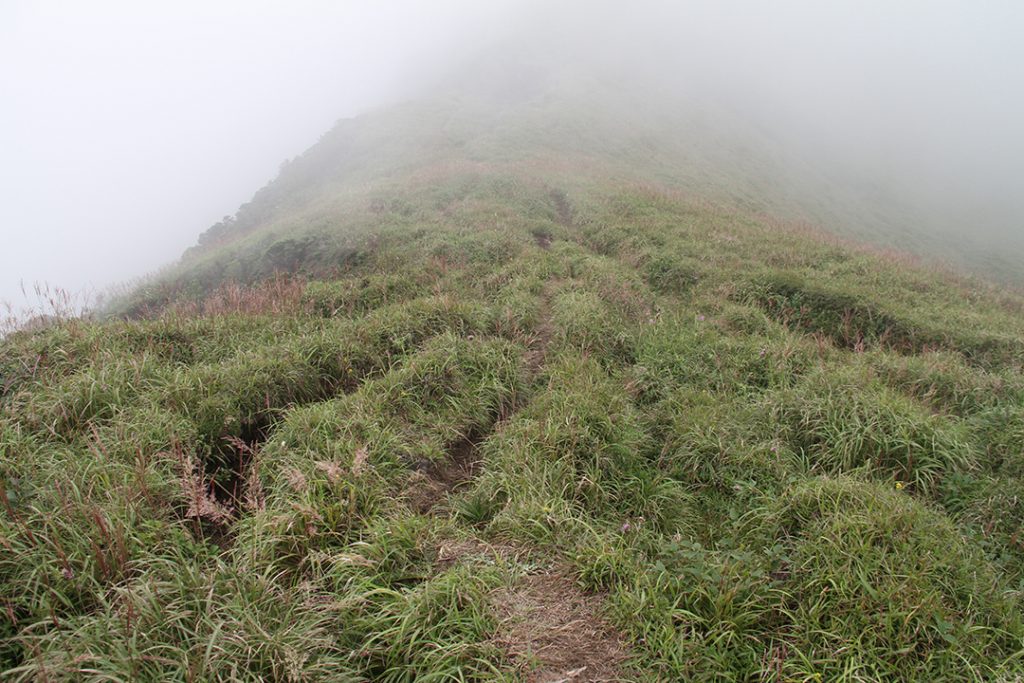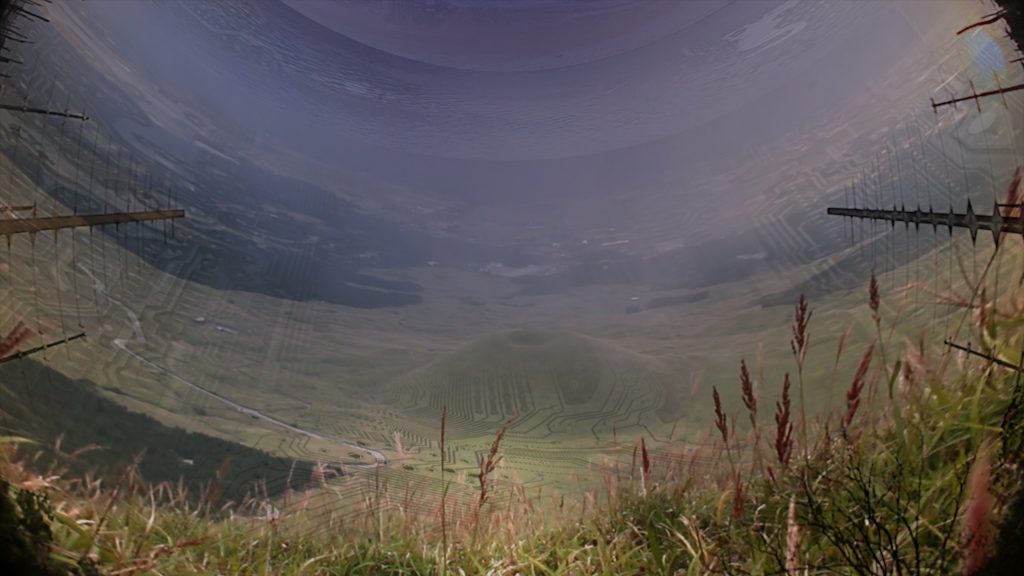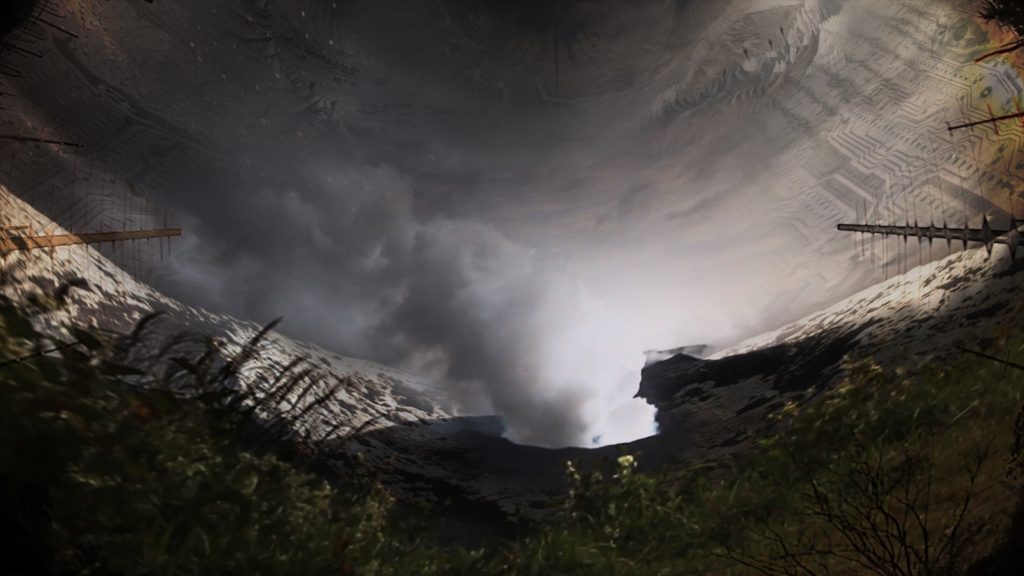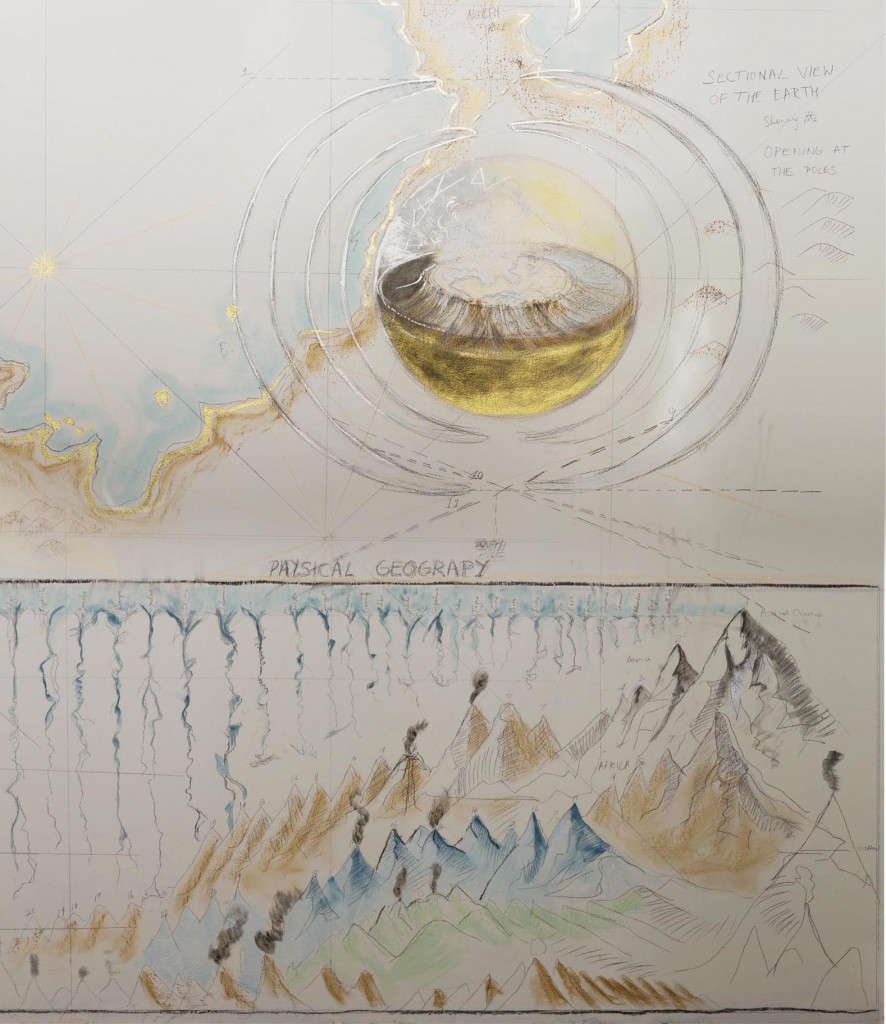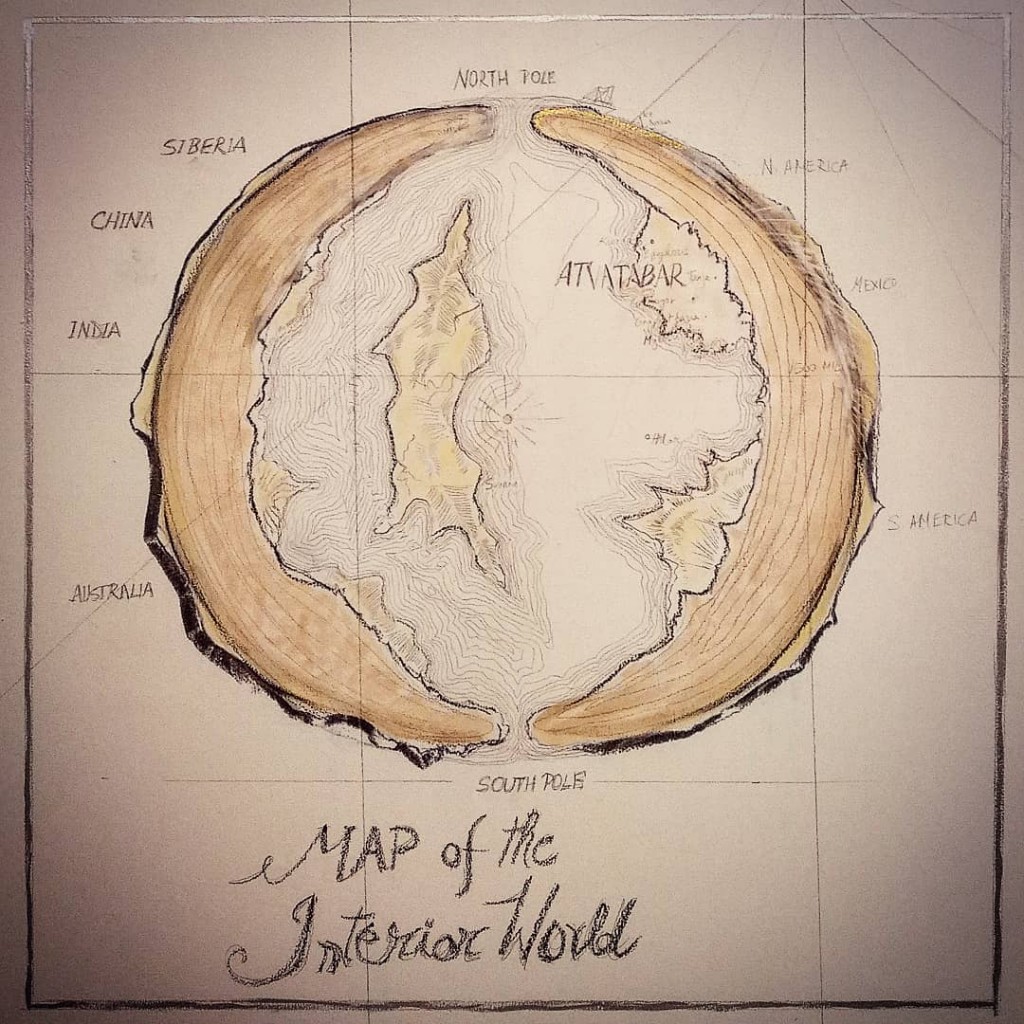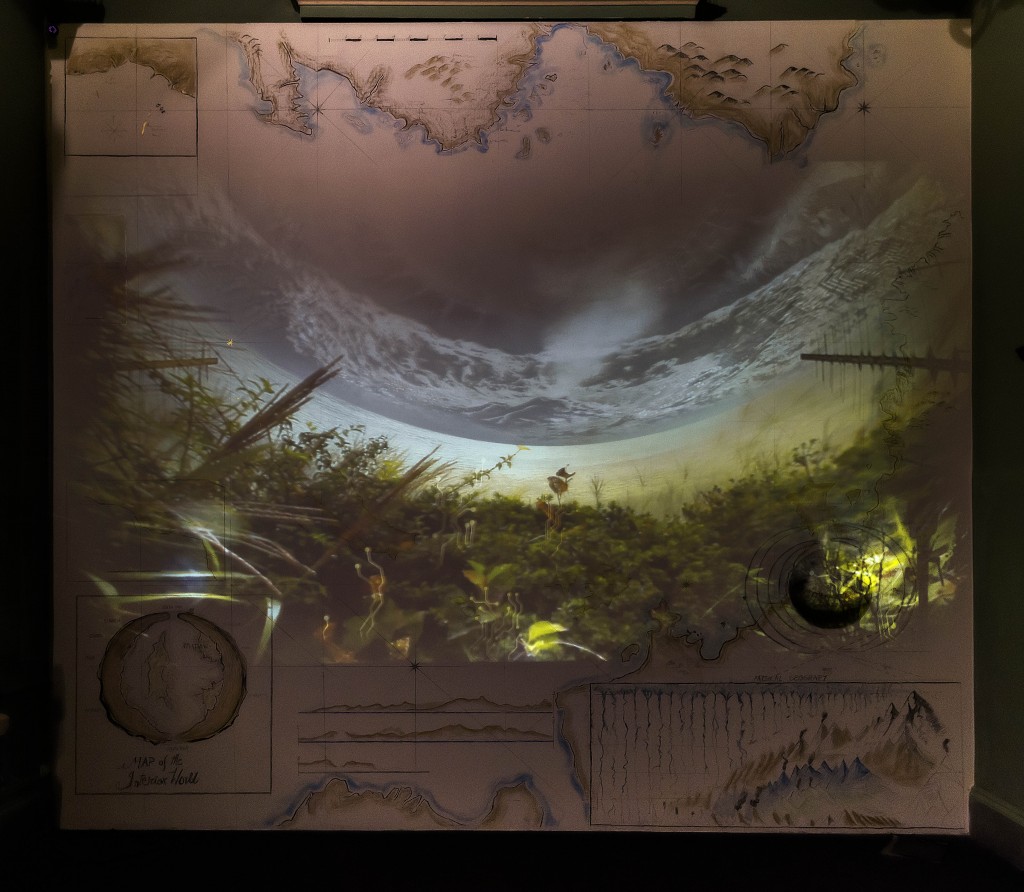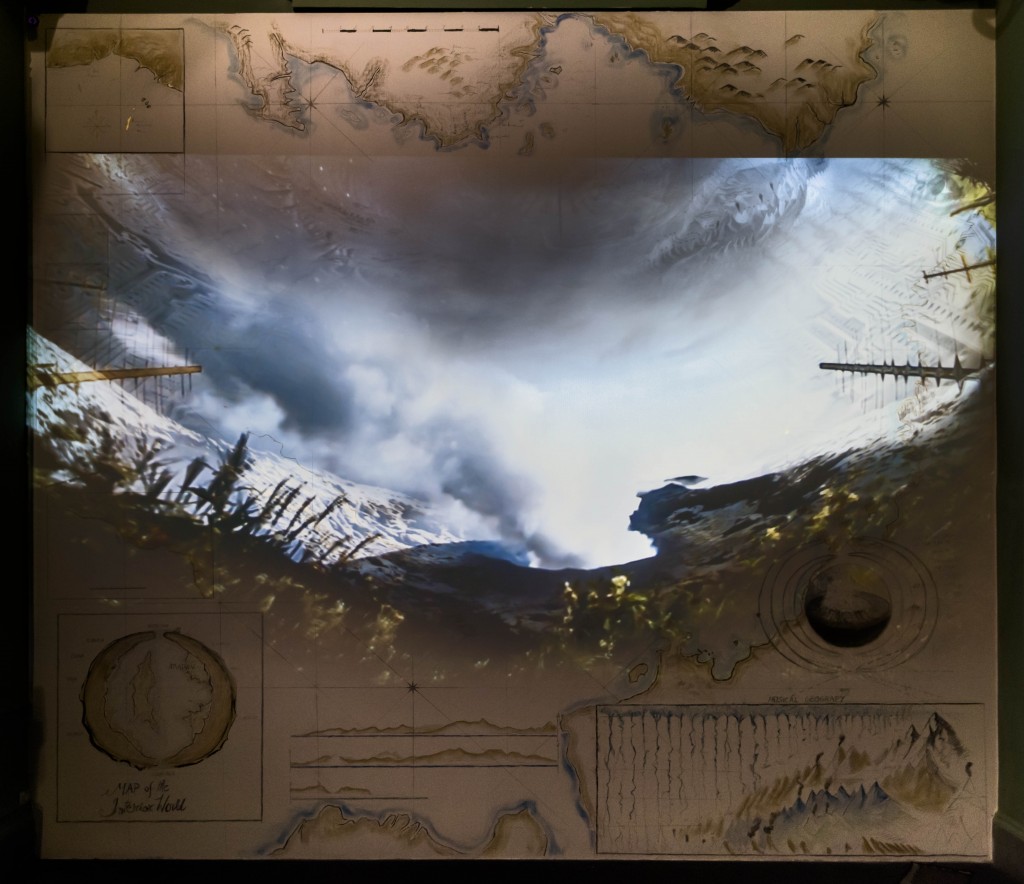Spheres
- posted in
ENCOUNTER
” Directly ahead, the ground was indeed completely flat; to right and left, at the limits of the floodlit area, the rising curve could just be detected. They might have been walking along a very wide, shallow valley; it was quite impossible to believe that they were really crawling along the inside of a huge cylinder, and that beyond this little oasis of light the land rose up to meet – no, to become- the sky.” 1
An unidentified object enters our solar system. We soon learn that the object is a perfect cylinder – 54km long, 20km in diameter – and it’s heading straight for the sun. This is Arthur C Clark’s 1973 novel Rendezvous with Rama. What follows is gradual unfolding of what lies within that alien cylinder – the Rama of the title. A world turned outside in, with a cylindrical sea that arches above the explorers’ heads, possible cities dotted around the inner circumference and artificial light provided by three linear suns, embedded in giant trenches in the walls. Yet Rama the unfamiliar has strangely familiar undertones. I first read the book more than 25 years ago, but Rama’s ‘climate’ if you will, has stayed with me, with its peculiar quality of light, ideas of interiority, inversion and a strangeness; not of haunting but of wonder. The theme of encounters between the ‘natural’ and ‘technological’, ‘human’ and ‘non-human’ where surprising intersecting patterns between the two are made visible, is something I continue to explore through my work today.
SITE
Over the past few years I have become increasingly conscious of the methods of ‘field work’ and ‘expedition’ in my practice. I am also interested in the different ways the field functions. The field is a place or group of physical sites in which evidence of past activity is preserved. As a mode or methodology, it is a space for investigation that allows you to explore something unfamiliar, rather than a moment of necessarily acquiring knowledge. My current practice engages with the field both as a series of physical sites – skies, sea forts, observatories, telescopes ‘etc.
A site will never be what you expected. Neither will your reaction to the site be what was expected. The landscape, weather, your tools; the camera, the audio recorder, sketchbook, all function differently. Circumstances come together to force you to do what you can under a very specific set of circumstances. Once you have collected and recorded what you ‘could’, you make something of this collection, not of what you thought to collect. You begin to speculate, to create fictions.
- The cinder cone crater, Aso
- View from Aso
My visit to the Mt Aso volcanic crater or caldera, in Japan (2014) was one such experience. 47 km south of Kumamoto, the tiny town of Aso sits in the middle of Japan’s second largest volcanic caldera. It isn’t rare to see calderas of this scale; but a caldera with an interior stable enough to cultivate land, build highways and lay railroads is quite rare. Geologically unique with a circumference of approximately 120 km and five peaks within its basin, this site also has high occurrence of mist / fog and descending cloud.
Simon Schama said “once a certain idea of landscape, a myth, a vision, establishes itself in an actual place, it has a peculiar way of muddling categories, of making metaphors more real than their referents; of becoming in fact, part of the scenery.”i
Aso seems like a place that should be shrouded in legend and mystery. The next two days were spent trekking across the caldera and collecting / recording the landscape and environment.
The work that emerged out of this particular expedition, Spheres, a video and drawing based work in three parts, is the closest I have come to capturing or expressing the ‘climate’ I associate with Clarke’s book.
Lying somewhere between reality and fiction, the video footage shot on site at the Caldera, is re-imagined so we seem to be looking inside some form of hollowed out space, a sphere? We see a volcanic cinder cone crater, which stands as a sentinel of past upheaval; we see mist, cloud and fog, a distant horizon, an atmosphere. A sun, possibly artificial, simulates a daylight cycle, illuminating and obscuring the landscape by turns; a recognizable pattern in an otherwise strange but not entirely alien landscape.
- Spheres, (video still) single channel video, 2017
- Spheres, (video still) single channel video, 2017
The film is projected onto a large site-specific wall drawing where video and drawn mark interact in unexpected ways and complete the work.
The drawing that forms the base for the video work draws from the history of geology, astronomy, and volcanology, when the Earth was still being explored as an entity within space. The drawing brings together specific moments of the depiction of our planet as a sphere or whole. Specifically,
1. the ‘Hollow Earth’ theory where it was believed another world existed at the centre of the planet which could be accessed by openings at both poles. A cross-sectional drawing of the planet Earth showing the “Interior World” of Atvatabar, from William R. Bradshaw’s 1892 science-fiction novel The Goddess of Atvatabar.
2. Another is the Homeric view of the Earth in 900 B.C. represented as a flat, circular disc of land surrounded by a continuous ocean-stream. In this interpretation the world is like a plateau on the top of a mountain, surrounded by Oceanus, the world river, and from its periphery rises the fixed dome of the sky. The sun, the moon, and the stars rise from the waters at the edge of the dome, move in an arc above the earth, and then sink once again into the sea to complete their course beneath the Oceanus.
3. Jule’s Verne’s Journey to the Center of the Earth (1864) The volcano becomes the portal through which this hollow earth was accessed.
- Spheres (details)
- Spheres (details)
STRANGE-ING
Juxtaposing these ideas of the Earth with Clark’s Rama, and similar space habitat designs such as the dyson sphere, O’Neill cylinder, Bernal sphere, Spheres then is a jigsaw of ‘alternative maps or plans’, of new terrains and fictions, created through the layering of drawn mark with video.
In rendering the strange conceivable, projection has its limitations, as with Galileo’s description of the dark spots on the lower horn of the moon. But studies on creative problem solving specifically William J.J. Gordon’s theories and those of Bipin Indurkhya have shown that one way of gaining new perspectives on a problem is to juxtapose it with something completely unrelated, thereby making the familiar…. strangeii. I like the analogy of a mirror in this context, not just because it references both the telescope and the microscope, but also because when you mirror something, it is reversed and very often that reversal is enough to make something familiar very strange.
Strange-ing then for me, becomes a strategy for encountering, observing and finally recording both environment and experience. Strange-ing as a practice explores the inter-connectedness of our relationship to the planet and offers a perspective that may be useful to our imagination of our future in both shaping and living within it. When walking a fine line between wonder and the uncanny, it can change how we see the world.
- Spheres (details),
- Spheres (details),
- Spheres, Metallic paint, pan pastel, dry pastel, acrylic, charcoal, pencil, colour pencil on wall, video duration 22 minutes, Installation view: Bhau Daji Lad museum, 2018arjah Biennale. Copyright. Photo: Anil Rane
- Spheres, Metallic paint, pan pastel, dry pastel, acrylic, charcoal, pencil, colour pencil on wall, video duration 22 minutes, Installation view: Bhau Daji Lad museum, Photo: Anil Rane
